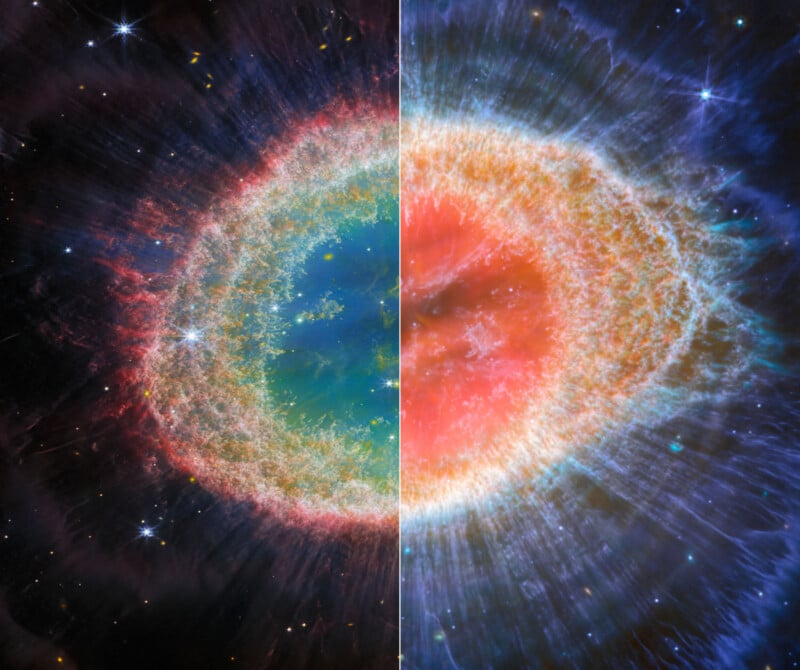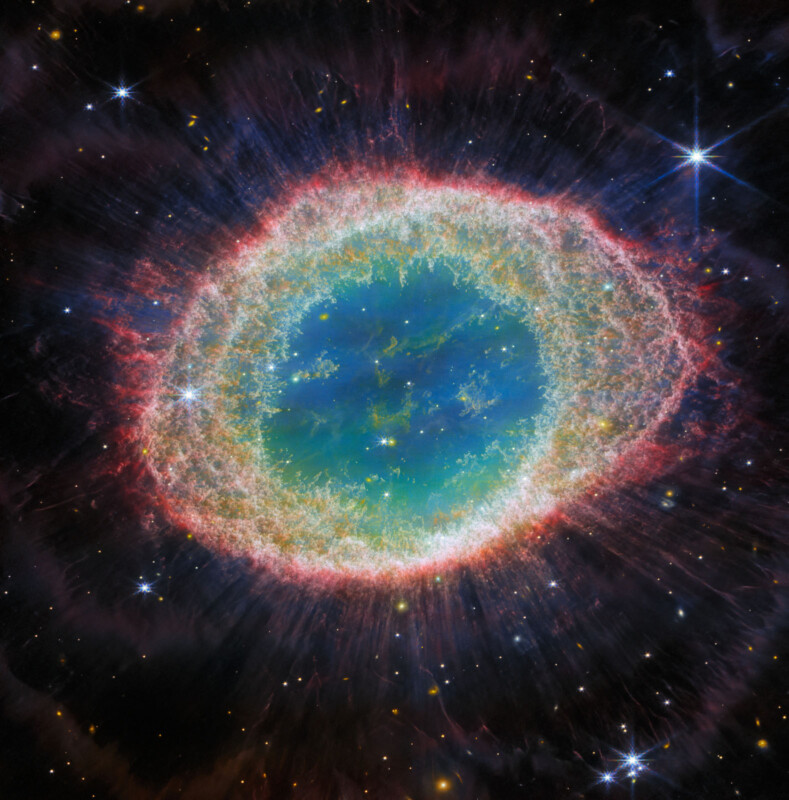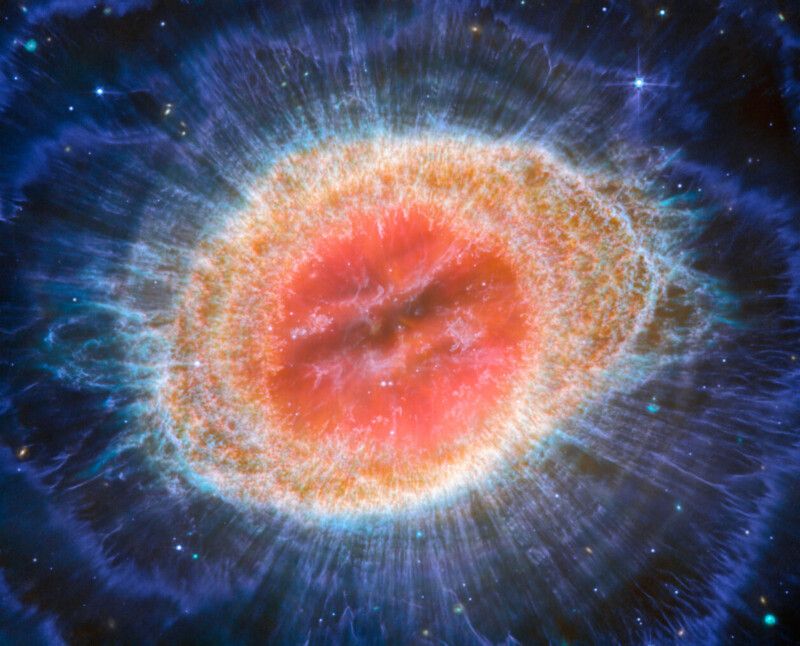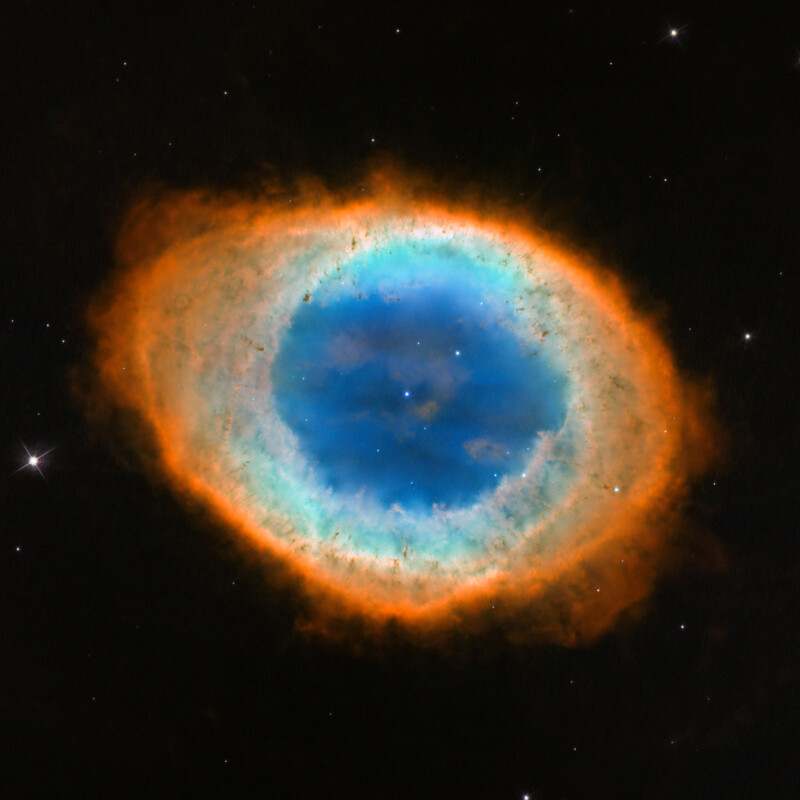Webb Photographs the Ring Nebula in Unprecedented Detail

The James Webb Space Telescope has observed the Ring Nebula in spectacular, unprecedented detail using its Near-InfraRed Camera (NIRCam) and Mid-InfraRed Instrument (MIRI) imagers.
The Ring Nebula, also known as Messier 57 (M57) and NGC 6720, is an archetypal planetary nebula. It is a fantastic example of a planetary nebula, or the glowing remains of a Sun-like star, and a relatively nearby celestial object. Amateur astronomers can even observe M57 for themselves.
Located roughly 2,500 light-years from Earth in the constellation Lyra, the Ring Nebula was discovered back in 1779 by astronomers Charles Messier and Antoine Darquier de Pellepoix. Coincidentally, both astronomers discovered the nebula when trying to track a comet through Lyra. The comet passed very close to the Ring Nebula.

The incredible spatial resolution and spectral sensitivity of Webb’s NIRCam and MIRI have enabled researchers to more closely inspect and study the filament structure of M57’s inner ring and look at never-before-seen details in the outer regions of the nebula’s ring.
Within the nebula, there are roughly 20,000 “dense globules” that are “rich in molecular hydrogen,” the European Space Agency (ESA) explains. ESA adds that the nebula’s “main shell” contains a thin ring of “enhanced emission” from carbon-based molecules known as polycyclic aromatic hydrocarbons (PAHs). It is believed that much of the carbon in space exists in the form of PAHs. Per the Massachusetts Institute of Technology (MIT), PAHs may prove critical for planetary formation.
“Roughly ten concentric arcs are located just beyond the outer edge of the main ring. The arcs are thought to originate from the interaction of the central star with a low-mass companion orbiting at a distance comparable to that between the Earth and the dwarf planet Pluto. In this way, nebulae like the Ring Nebula reveal a kind of astronomical archaeology, as astronomers study the nebula to learn about the star that created it,” writes ESA.

The colorful main ring of M57 is composed of the gas being “thrown off” by a dying star at the nebula’s center. The star, first observed by Hungarian astronomer Jenő Gothard in 1886, is becoming a compact white dwarf star.
A white dwarf star is highly dense, and its low luminosity results from residual thermal energy, as a white dwarf star no longer performs nuclear fusion. The white dwarf stage is the final part of the lifecycle for a star like this, and this is what will eventually happen to the Sun.

The newest images are not Webb’s first look at the Ring Nebula. Earlier this month, PetaPixel featured a spectacular shot of the Ring Nebula that looks much like a sports stadium lit up at night.
While a different object, Webb also imaged the similar Southern Ring Nebula as part of its Early Release Observations (ERO) program last summer.
Image credits: NASA, ESA, and C. Robert O’Dell (Vanderbilt University) | Webb is an international partnership between NASA, ESA, and the Canadian Space Agency (CSA).